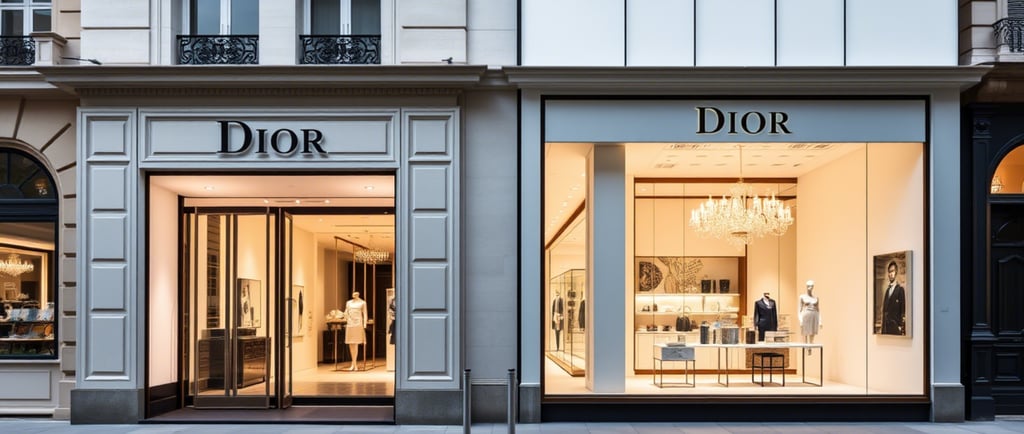Strategic Merchandising and the Enduring Impact of Curation
10/12/20253 min read


The spaces where light plays against crystal and silk, where every angle is considered and every placement deliberate, an ancient magic unfolds. The most coveted luxury boutiques across global capitals don't merely display products—they orchestrate experiences, crafting silent narratives that speak volumes to discerning eyes. This is not commerce; this is the theater of desire, meticulously directed through the timeless art of merchandising.
The Psychology of Exceptional Curation
The luxury consumer navigates spaces differently than the average shopper. Research from the Journal of Retailing demonstrates that high-net-worth individuals spend 23% longer examining visual merchandising cues before making purchase decisions. This deliberate engagement stems from a fundamental truth: luxury is not about acquisition but about discrimination—the ability to recognize and appreciate excellence.
Exceptional merchandising creates cognitive bridges between products and aspirations. A Hermès scarf displayed against a backdrop that evokes Parisian boulevards does more than showcase craftsmanship—it transports the viewer to a world where such refinement is the norm rather than the exception. The psychological impact is profound, creating what neuroscientists term "contextual memory anchors" that enhance perceived value.
Architectural Dialogue: Space as Silent Salesperson
The most sophisticated luxury merchandisers understand that architecture serves as the ultimate display case. At Dior's renovated 30 Avenue Montaigne location, product displays engage in silent conversation with the architectural elements, creating a seamless experience where the distinction between container and contained blurs artfully.
This architectural integration manifests in measured proportions—the golden ratio appearing repeatedly in display heights, the deliberate asymmetry that draws the eye across carefully considered focal points. Nothing is accidental; everything is composed. The luxury consumer unconsciously registers this attention to detail as validation of the brand's commitment to excellence in all domains.
The Curator's Eye: Selection as Signature
Behind every exceptional luxury display stands an invisible curator whose discernment shapes the consumer experience. These merchandising directors function as cultural translators, transforming abstract brand values into tangible arrangements that communicate without words.
The selection process for seasonal displays at houses like Cartier or Brunello Cucinelli involves rigorous criteria beyond commercial potential. Products are evaluated for their narrative contribution—how effectively they advance the brand's ongoing story. This explains why certain pieces receive prominent placement despite limited production runs; they serve as narrative keystones rather than mere inventory.
Digital Translation: The New Frontier
The migration of luxury merchandising to digital platforms presents unprecedented challenges and opportunities. Leading houses now employ specialized teams dedicated to translating physical merchandising principles into virtual experiences.
Interactive technologies enable unprecedented personalization in digital merchandising. Advanced ecommerce platforms now track visual engagement patterns, allowing for dynamic adjustments to presentation based on individual viewing behaviors. This represents the next evolution in curation—displays that adapt in real-time to the viewer's demonstrated preferences while maintaining brand integrity.
Sensory Integration: Beyond the Visual
The most sophisticated contemporary merchandising strategies engage multiple senses simultaneously. Temperature-controlled display cases for leather goods maintain ideal humidity levels while subtly diffusing signature scents. Tactile elements invite touch through carefully selected materials that complement displayed products.
These multisensory approaches create what neuroscientists term "sensory congruence"—a state where multiple perceptual inputs reinforce a single conceptual message. The luxury consumer experiences this as a sense of harmony that significantly enhances perceived authenticity and value.
Algorithmic Curation and Human Artistry
Looking forward, the most innovative luxury houses are exploring the delicate balance between data-driven merchandising and human intuition. Artificial intelligence now analyzes customer movement patterns within physical and digital spaces, identifying optimal placement opportunities with unprecedented precision.
Yet the most successful implementations retain human oversight—the irreplaceable curatorial sensibility that distinguishes mechanical arrangement from meaningful storytelling. This partnership between analytical intelligence and creative vision represents the next frontier in luxury merchandising.
The Invisible Art
Paradoxically, the greatest achievement in luxury merchandising is to become invisible—to create displays so harmonious that they register as inevitable rather than constructed. When a customer leaves a boutique remembering the products rather than their presentation, merchandising has achieved its highest purpose.
The art of great merchandising remains fundamentally unchanged despite technological advancements. At its core lies the ability to create desire through context—to transform objects into experiences and transactions into relationships. In an age of unprecedented access and abundance, this curatorial skill may be the most valuable luxury of all.
